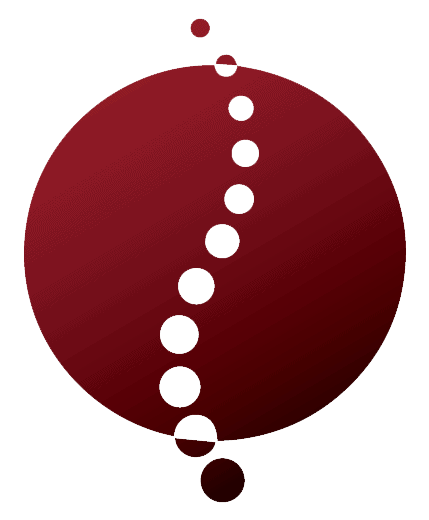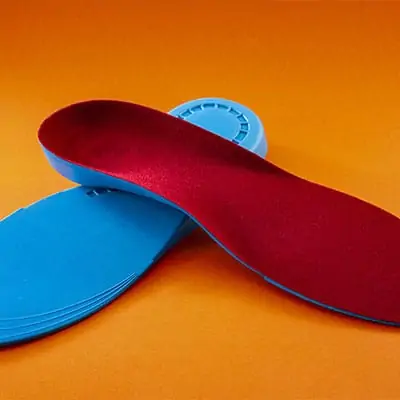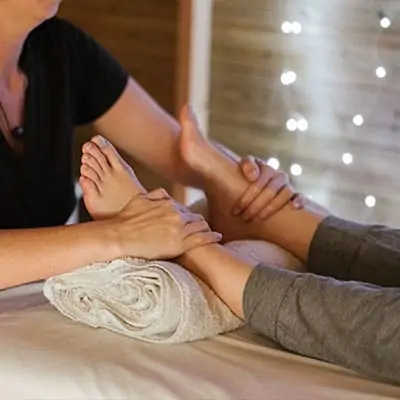Understanding Sciatica and Massage Therapy
What is Sciatica?
Sciatica is a term used to describe pain that travels along the path of the sciatic nerve, which runs from your lower back through your hips and buttocks and down each leg. This condition often occurs when the sciatic nerve is compressed, typically due to a herniated disc, bone spur, or narrowing of the spine. The pain can vary widely, ranging from a mild ache to intense discomfort, and may also include symptoms such as tingling, weakness, or numbness in the affected leg.
| Symptom | Description |
|---|---|
| Pain | Can be sharp or dull |
| Numbness | Sensation loss in the leg |
| Tingling | Pins and needles sensation |
| Weakness | Difficulty moving the leg |
How Massage Therapy Can Help with Sciatica
Massage therapy for sciatica can be an effective treatment option. It aims to relieve pain, reduce muscle tension, and improve overall mobility. Through various techniques, massage therapy addresses the underlying causes of sciatica by alleviating pressure on the sciatic nerve and surrounding structures.
Here are some key benefits of massage therapy for individuals experiencing sciatica:
| Benefit | Description |
|---|---|
| Pain Relief | Reduces discomfort and provides relief from sharp pain. |
| Increased Flexibility | Enhances movement and flexibility in tight muscles. |
| Improved Circulation | Boosts blood flow to heal affected areas more efficiently. |
There are different types of massage techniques that can be used to address sciatica pain. These include Swedish massage therapy, deep tissue massage therapy, and trigger point massage therapy. Each technique has its own unique approach, allowing you to find a method that works best for your condition.
Incorporating massage therapy into your treatment plan can help you manage your sciatica symptoms effectively. For more information on the various benefits of massage therapy, check out our article on massage therapy benefits. By understanding the relationship between sciatica and massage therapy, you can take proactive steps towards finding relief.
Benefits of Massage Therapy for Sciatica
Massage therapy can be an effective complementary treatment for sciatica, providing a variety of benefits that can help you manage pain and improve mobility. Below are some key advantages of utilizing massage therapy for sciatica.
Pain Relief
One of the primary outcomes of massage therapy for sciatica is pain relief. Techniques such as deep tissue massage target the muscles and connective tissues surrounding the sciatic nerve. This can help to alleviate muscle tension, reduce inflammation, and promote relaxation, leading to significant reductions in pain.
| Type of Massage | Pain Relief Level (1-10) |
|---|---|
| Swedish Massage | 6 |
| Deep Tissue Massage | 9 |
| Trigger Point Therapy | 8 |
Research indicates that regular sessions of therapeutic massage therapy can enhance your overall comfort by decreasing pain levels and increasing your ability to perform daily activities.
Increased Flexibility
Another benefit of massage therapy is the enhancement of flexibility. The stretching and manipulation of soft tissues during a massage session help to loosen tight muscles and joints, improving your range of motion.
Increased flexibility can lead to better posture and less strain on the lower back, which is especially beneficial for individuals dealing with sciatica.
| Type of Massage | Flexibility Improvement (%) |
|---|---|
| Swedish Massage | 15% |
| Deep Tissue Massage | 25% |
| Trigger Point Therapy | 20% |
Incorporating sports massage therapy techniques can also further bolster flexibility, making it easier to engage in physical activities without discomfort.
Improved Circulation
Massage therapy also promotes improved circulation in the affected areas. Enhanced blood flow delivers essential nutrients to muscles and tissues while removing waste products. This increased circulation can accelerate healing and reduce muscle soreness.
| Type of Massage | Circulation Boost (%) |
|---|---|
| Swedish Massage | 20% |
| Deep Tissue Massage | 30% |
| Trigger Point Therapy | 25% |
Enhanced circulation is especially beneficial for individuals suffering from sciatica, as it nourishes inflamed tissues and reduces swelling. Consider various massage therapy techniques that can aid circulation, such as lymphatic drainage or hot stone massage therapy.
By leveraging the pain relief, increased flexibility, and improved circulation that massage therapy offers, you can better manage your sciatica and improve your overall well-being.
Types of Massage Techniques for Sciatica
When considering massage therapy for sciatica, understanding the various techniques can help you decide which approach is best for your needs. Each type of massage therapy offers unique benefits that can alleviate discomfort associated with sciatica.
Swedish Massage
Swedish massage is one of the most common types of massage therapy and is often recommended for relaxation and stress relief. This technique utilizes long, flowing strokes, kneading, and circular movements to promote relaxation and improve circulation.
Benefits:
- Enhances blood flow
- Reduces stress and anxiety
- Eases muscle tension
| Technique | Key Features | Benefits |
|---|---|---|
| Swedish Massage | Long strokes, kneading, circular motions | Promotes relaxation, improves circulation |
For more information, review our article on swedish massage therapy.
Deep Tissue Massage
Deep tissue massage is focused on the deeper layers of muscle and connective tissue. Using firm pressure and slow strokes, this technique targets areas of tension and chronic pain, making it particularly effective for sciatica sufferers.
Benefits:
- Reduces chronic pain
- Alleviates muscle tension
- Improves mobility
| Technique | Key Features | Benefits |
|---|---|---|
| Deep Tissue Massage | Firm pressure, slow strokes | Targets tension, improves mobility |
This method can be explored further in our article on deep tissue massage therapy.
Trigger Point Therapy
Trigger point therapy focuses on specific areas of tight muscle fibers that can develop when muscles are overworked or injured. By applying pressure to these trigger points, this technique can help relieve pain and restore mobility, making it effective for managing sciatica symptoms.
Benefits:
- Relieves specific areas of pain
- Releases tight muscles
- Increases range of motion
| Technique | Key Features | Benefits |
|---|---|---|
| Trigger Point Therapy | Focus on specific tight muscle areas, direct pressure application | Alleviates localized pain |
To learn more about this technique, visit our article on trigger point massage therapy.
Choosing the right massage technique can significantly impact your comfort and recovery process. Explore each method to find the one that matches your specific needs and enhances your overall wellness.
How to Choose a Massage Therapist
Finding the right massage therapist is key to experiencing the full benefits of massage therapy for sciatica. Here are essential factors to consider when making your choice.
Qualifications and Certifications
Ensure that your massage therapist has the necessary qualifications and certifications. Proper training is essential for effective treatment and safety. Look for therapists who are licensed and have completed programs recognized by reputable organizations. Common certifications include:
| Certification | Description |
|---|---|
| Licensed Massage Therapist (LMT) | Completed required hours of education and passed licensing exams. |
| National Certification Board for Therapeutic Massage and Bodywork (NCBTMB) | Certification indicating advanced knowledge and skills. |
| Specialty Certifications | May include areas such as deep tissue, sports massage, or trigger point therapy. |
Communication and Comfort Level
Effective communication with your massage therapist is crucial. You should feel comfortable discussing your symptoms, preferences, and any discomfort during the session. Assess how attentive the therapist is to your needs and how effectively they explain their methods and techniques. Comfort level fosters trust, which can enhance your relaxation and overall experience. Questions you might consider asking include:
- What techniques do you recommend for my sciatica?
- How will you tailor the sessions to address my specific concerns?
- What can I expect during our sessions?
Experience with Sciatica
When seeking massage therapy for sciatica, ensure that the therapist has experience in treating this condition. Experienced therapists will understand the common causes and symptoms of sciatica and will have a repertoire of effective techniques. You might want to confirm:
- How long have you been practicing massage therapy?
- What types of conditions do you typically treat?
- Can you provide references from clients with sciatica?
Choosing the right therapist can significantly impact your recovery process. For more information on various techniques, you can explore our guide on types of massage therapy and learn about specific treatments like deep tissue massage therapy or trigger point massage therapy.
Self-Care Tips for Managing Sciatica
Managing sciatica at home can greatly complement the benefits of treatment options such as massage therapy for sciatica. Here are some self-care tips to help alleviate your symptoms.
Stretching Exercises
Incorporating specific stretching exercises into your daily routine can help relieve tension in the muscles that may be contributing to sciatic pain. Below is a list of beneficial stretches you can try:
| Stretch | Description |
|---|---|
| Piriformis Stretch | Lie on your back and cross your right ankle over your left knee. Gently pull your left thigh towards your chest. Hold for 30 seconds and switch sides. |
| Knee to Chest Stretch | Lie on your back, pull one knee towards your chest, holding for 15-30 seconds. Alternate legs. |
| Cat-Cow Stretch | Start on all fours. Arch your back (cat) and then lower it while looking up (cow). Repeat for 5-10 cycles. |
These exercises can enhance flexibility and help reduce tension. For more targeted stretching routines, check our article on therapeutic massage therapy.
Proper Posture
Maintaining good posture can significantly impact your sciatic pain. Here are some guidelines to ensure you maintain proper alignment:
| Activity | Proper Technique |
|---|---|
| Sitting | Keep your feet flat on the floor and back straight. Use a chair that supports your lower back. |
| Standing | Distribute your weight evenly on both feet. Keep shoulders back and relaxed. |
| Lifting | Bend your knees and keep your back straight when lifting objects. |
Awareness of your posture throughout the day helps minimize strain on your spine and the surrounding muscles. Proper posture can also enhance the effectiveness of treatments such as deep tissue massage therapy.
Heat and Cold Therapy
Using heat and cold can provide relief from sciatic pain by reducing inflammation and increasing blood flow to the affected area. Here’s how to effectively implement these therapies:
| Therapy | Method |
|---|---|
| Heat Therapy | Apply a warm towel, heating pad, or hot pack to the affected area for 15-20 minutes. This helps relax muscles and improve circulation. |
| Cold Therapy | Use an ice pack wrapped in a cloth on the painful area for 10-15 minutes. This can minimize inflammation and numb sharp pain. |
You can alternate between heat and cold therapy based on your comfort level and the state of your pain. This technique can complement other treatments discussed in our article on types of massage therapy.
By integrating stretching, proper posture, and heat and cold therapy into your routine, you can take proactive steps to manage your sciatic pain more effectively. Remember to consult with a healthcare provider before starting any new exercise or treatment plan to ensure it is appropriate for your condition.
Precautions and Considerations for Massage Therapy
When seeking relief from sciatica through massage therapy, several precautions and considerations are vital to ensure safety and effectiveness. You should assess your situation and communicate clearly with healthcare professionals and your massage therapist.
Consulting with Your Healthcare Provider
Before beginning any massage therapy for sciatica, it is important to consult with your healthcare provider. They can assess your specific condition, Rule out any serious underlying issues and provide guidance on whether massage is appropriate for you. By discussing your symptoms and treatment options, you can make informed decisions that prioritize your health and well-being.
| Considerations | Recommended Actions |
|---|---|
| Existing Health Issues | Consult your doctor about any chronic conditions, like heart disease or pregnancy. |
| Medications | Inform your healthcare provider of any medications that might affect therapy. |
| Recent Surgeries | Discuss any recent surgeries, especially in the back or spine, with your healthcare provider. |
Communicating Your Symptoms
Effective communication with your massage therapist is crucial for achieving the best results. Make sure to share any symptoms related to your sciatica, including pain intensity, location, and any additional discomfort you may experience. This information enables the therapist to tailor the massage techniques to your specific needs, providing a more effective treatment.
| Symptom Type | Importance of Communication |
|---|---|
| Pain | Describe types of pain (sharp, dull, radiating). |
| Duration | Indicate how long you have experienced symptoms. |
| Aggravating Factors | Discuss activities that worsen your condition. |
Frequency and Duration of Sessions
The frequency and duration of massage therapy sessions can significantly impact your recovery from sciatica. Depending on your condition, your healthcare provider may suggest a specific treatment plan. Initially, more frequent sessions may be beneficial, gradually decreasing as your symptoms improve.
| Recommended Session Frequency | Common Duration |
|---|---|
| 1-2 times per week | 30-90 minutes per session |
Adhering to your treatment plan and discussing any changes in your condition with your therapist will help maximize the benefits of your massages.
For more information on the various techniques and methods available, explore our article on types of massage therapy. By being proactive and informed, you can effectively integrate massage therapy into your recovery plan for sciatica.











